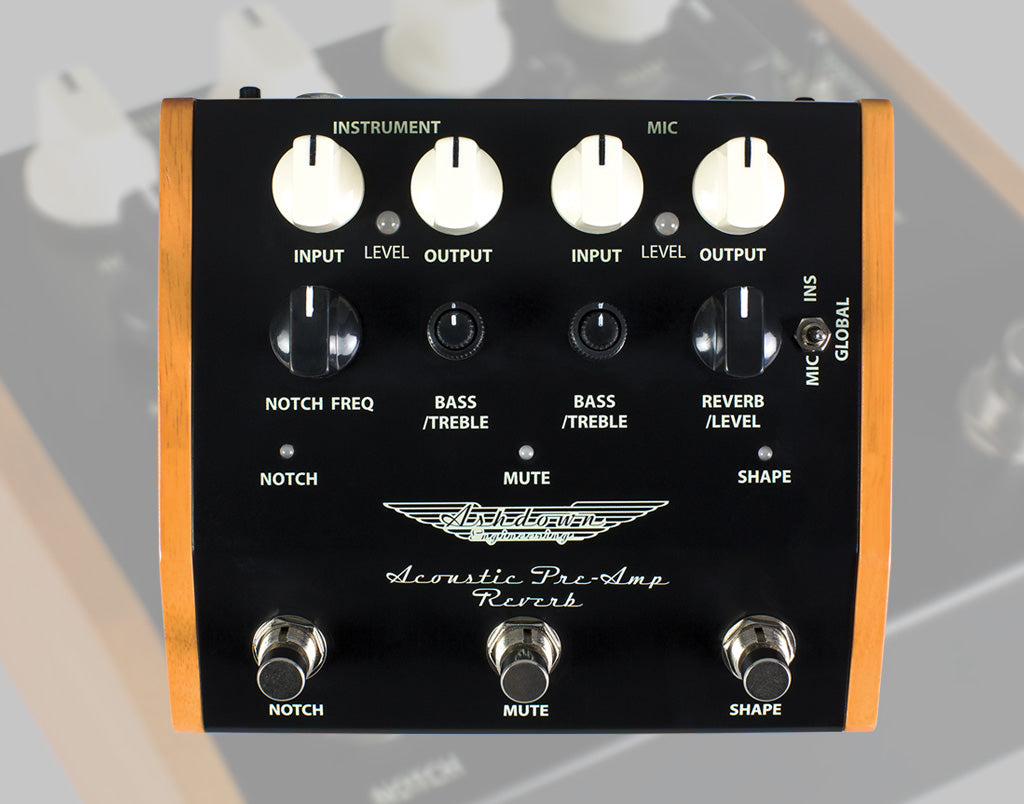Ashdown's Pre-Amp Reverb Pedal allows guitarists to get that studio sound quality night after night.
Set in the world’s heart of music, Nashville, Tennessee - Summer NAMM showcases a complete product landscape from some of the globes leading manufacturers in musical equipment.
Never ones to disappoint, Ashdown Engineering are proud to announce the launch of a new product which falls into their acoustic range: The Ashdown Pre-Amp Reverb.
Ashdown Engineering have a solid reputation and heritage for building great sounding and reliable acoustic amplification, not forgetting that Ashdown’s founder, Mark Gooday was responsible for the Trace Elliot Acoustic line, the world’s first acoustic amplification line.
For a long time, acoustic guitarists have strived to achieve a live sound to match their studio sound. Mediating the signal between instrument and PA and designed to bring out a more natural and clear sound form your acoustic guitar, the Ashdown Pre-Amp Reverb Pedal allows guitarists to get that studio sound quality night after night.
The Pre-Amp Reverb Pedal has a very simple but effective layout that utilises many features of Ashdown’s popular Woodsman Acoustic Guitar amp range. It includes a notch filter, high and low (bass/treble) EQ rotary controls, Notch Frequency control for feedback resonance, as well as a footswitchable shape button - bringing the player up in the mix when it counts.
The pedal features dual inputs for both instrument (Jack) and microphone (XLR), so the player can go direct in with their guitar and use a microphone for vocals at the same time.
The input assignable reverb switch lets you choose which channel has reverb applied to it, meaning you can add reverb to your guitar, vocals or both at the same time. The welcomed addition of reverb to Ashdown’s acoustic line has allowed for the further tone shaping options that acoustic guitarists crave.
Just as you’d expect from any good acoustic pre-amp pedal, there’s also a very handy balanced DI output, allowing the guitarist to run their signal straight into the PA for ease of use. No need for a separate DI box. The Pre/Post switch at the rear of the pedal either sends a clean signal (pre) or signal with effects (post) to the balanced DI output.


Share:
The (one and only) OriginAL Head
RE-LAUNCHED: The OriginAL Valve Pre-DI Pedal